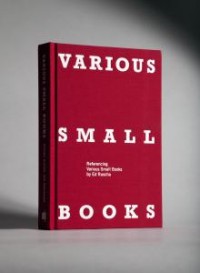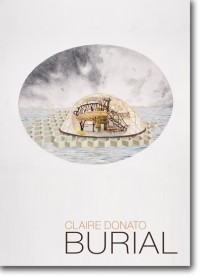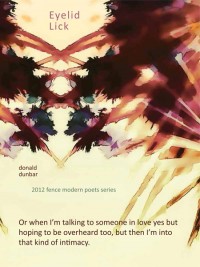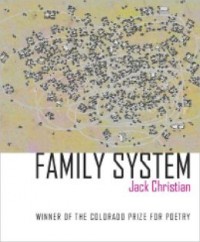25 Points: Testicular Cancer
1. Germ cells are immortal.
2. Germ cells contain half the number of chromosomes needed to make an organism, and so are specially made for sexual reproduction, but they can divide and differentiate into any kind of biological tissue. They can even create complex organs made of multiple tissues.
3. A teratoma is a germ-cell tumor—a bunch of inappropriate tissue in some inconvenient spot on the body, replicating wantonly. The best teratomas (the ones with gory, romantic stuff like hair or teeth or—gasp—eyes!) are collectible, formaldehydable medical oddities.
4. Though they form prenatally, teratomas commonly become large enough to notice only much later. Some are detectable by prenatal ultrasound. Some develop so rapidly in the womb that they endanger the fetus.
5. Teratomas are benign in themselves but, for reasons not yet understood, occasionally undergo cancerous transformations.
6. Words that rhyme w/ teratoma: adenoma, carcinoma, granuloma, hematoma, melanoma, myeloma, Oklahoma, papilloma, tokonoma.
7. My teratoma swole my entire right ball w/ almost nothing but cartilage. When I first noticed it, it was the size of a peach pit. By the time I had a doctor look at it, it had grown to the size of a jumbo egg and it was hard as a rock. I didn’t know what a teratoma was when I dropped my pants so the urgent care doctor could get a good look.
“Jesus Christ!” she said. “It’s hard as a rock!”
The urgent care doctor wanted to know how long had it been like this. It had been like this a year and half. Well then, why was it suddenly such an emergency I had to come in here on a Saturday?
8. It could be a few things, she said. It could be cancer, which was unlikely; or it could be like four other things which I don’t remember—and which don’t matter now anyway ‘cuz it was cancer. (She never said the word teratoma, which is in hindsight like duh the only thing it could have been, right?) Whatever it was, I had to get an ultrasound immediately, and then go see a urologist.
9. If you pay in full at the time of your visit, it costs $100 to have your balls touched and screamed at by a real doctor.
10. The ultrasound technologist held a tube of ultrasound gel upside down over my human junk.
“When did you first notice a lump?”
“Like, a year ago.”
“And it’s some kind of emergency today?”
“Um, yeah. Uh, my wife…”
Schplorpk! READ MORE >
July 30th, 2013 / 1:24 pm
25 Points: VARIOUS SMALL BOOKS: Referencing Various Small Books by Ed Ruscha
 VARIOUS SMALL BOOKS: Referencing Various Small Books by Ed Ruscha
VARIOUS SMALL BOOKS: Referencing Various Small Books by Ed Ruscha
Edited and compiled by Jeff Brouws, Wendy Burton, and Herman Zschiegner
Text by Phil Taylor, with an essay by Mark Rawlinson
MIT Press, 2013
288 pages / $39.95 buy from MIT Press or Amazon
1) “An evil word it is this love.” – Amiri Baraka (LeRoi Jones)
Perhaps the closest I’ve ever come to an original Ed Ruscha was working at the Graduate Theological Union (GTU) Library over in Berkeley up on the hill next to the University of California in 2002 or so. There was an art exhibit lasting several months of “religious art” or maybe it was “ideas of evil in art”… which included Ruscha’s one-word painting “Evil” (blood stains on satin) in its ever terrifically seducing red.
2) Or it may have actually been earlier than that, in the basement room at poet Tom Clark’s house in Berkeley on break from Poetics classes waiting for the bathroom. If, that is, it’s true that the tall horizontal painting of a semi-masked figure (some kind of postmodern Lone Ranger?) on one wall is in fact a Ruscha self-portrait. Which I hazily recollect being told by somebody sometime later on—or is it that it was a portrait of Ruscha done by Tom?
3) Regardless, my real introduction to Ruscha came via Jeffrey Karl Butler formerly of Portland, Oregon. Jeff once sent me a chair through the mail. An Eames-inspired piece. He knocked off the feet attaching various caps from an assortment of common household items in their place. The chair was sitting in my apartment vestibule beside the mailboxes when I came home from working at the GTU one day. Without packing or anything, a USPS shipping label smacked onto the front of the seatback, “LEGS” stenciled atop the back of the seatback, and under the seat stenciled “JKB ’01”.
4) “Fifty years ago, in 1962, Edward Ruscha published Twentysix Gasoline Stations, the first of a series of photobooks the artist made through the 1960s and 1970s. Consisting of black and white photographs of twenty-six filling stations situated along Route 66 between Los Angeles and Oklahoma, this deceptively simple book, much like Marcel Duchamp’s Fountain (1917), irrevocably altered our understanding of art.”
– Mark Rawlinson
5) The gist of Various Small Books is to document every photobook “known as of May 31, 2012, with apologies for anything omitted” which one way or another continues, extends, or otherwise is in conversation with Ruscha.
6) A short text describing each photobook accompanies one or more photographs of the project. Many are also accompanied by a full two-page spread of images from out the photobook.
7) Photobooks are grouped in chronological order by year of publication: 1954-1987 (five projects), 1991-2000 (seven projects), 2002-2006 (twenty-two projects), 2007-2008 (nineteen projects), 2009 (fifteen projects), 2010 (seventeen projects), 2011 (five projects).
8) The first photobook presented is Ginza Kaiwai and Ginza Haccho by Shobachi Kimura and Yoshikazu Suzuki published in 1954. This boxed set of two volumes contains Ginza Kaiwai “an extensive history of the neighborhood of Ginza,” complete with photographs and maps, while “alongside this conventional book is a concertina volume, Ginza Haccho, with two parallel photographic panoramas of every building on the avenue Ginza 8-chrome between Shinbashi and Kurobashi bridges.” The impact of “a western influence” on this neighborhood is noticeable in the photographs and although it’s an open question whether Ruscha ever knew of “this remarkable predecessor” the possibilities are too enticing not to risk “anachronism or attributing influence where perhaps none existed.”
9) Ruscha’s Every Building on the Sunset Strip appeared thirteen years after Ginza Kaiwai and Ginza Haccho.
10) Some other photobooks likewise concerned with a specific strip of commercial or otherwise set of buildings: Robert Venturi, Denise Scott Brown, and Steven Izenour’s Learning from Las Vegas, Robbert Flick’s Parade Route, Jean-Frédidéric Schnyder’s Zugerstrasse Baarerstrasse, Jonathan Monk’s None of the Buildings on the Sunset Strip, Edgar Arceneaux’s 107th Street Watts, Stan Douglas’ Every Building on 100 West Hastings, and Keith Wilson’s Every Building on Burnet (burn-it) Road. READ MORE >
July 25th, 2013 / 3:04 pm
25 Points: if u dont love the moon your an ass hole
 if u dont love the moon your an ass hole
if u dont love the moon your an ass hole
by Steve Roggenbuck
2013
$10.00 buy from LIVE MY LIEF
1. Burgeoning (burgeoned?) internet poet Steve Roggenbuck’s second book; promised to be meatier and denser than his first book, CRUNK JUICE.
2. CRUNK JUICE functioned well as a collection of Roggenbuck’s disparate subjects and styles–the startlingly direct and innocent love poems, the textual manipulation of “lowbrow” pop culture, the pseudo-immaturity blended with faux-irony–but each poetic mode was largely kept separate from the other via separate sections and poems, often punctuated by pages of isolated one-liners.
3. if u dont love the moon your an ass hole, on the other hand, stitches these voices together right down at the line level.
4. The most common type of poem in IUDLTMYAAH is a justified block of title-less text that reads like a transcription of one of Roggenbuck’s videos: line after line of relentless juxtapositions, jumping from something clever to something life-affirming to something brazenly obnoxious.
5. Example: “in spain they love football so much they even call soccer football. im becoming aware of the fact that boredom and laziness are social norms, that ive felt pressured to supress my excitement and set lazier goals. I TRAINED MY SON TO EAT OUT OF MY HAND SINCE HE WAS A TODDLER. IT’S RLY STARTING TO FUCK WITH HIM NOW HE’S 15.” And so on.
6. This sporadic format is a double-edged sword, and the amount of enjoyment you get out of this collection will largely come down to how much enjoyment you get from these individual lines. As one might imagine, reading a book full of these–even with variation–might be nonplussing to many.
7. One thought I had was that this book might not be ideal for reading in one go, though, and might be better suited to short reading bursts. Its small size is ideal for this: put it in your pocket/purse and bust it out for little boosts throughout your day.
8. These poems read like little peeks at a singular, alien twitter feed. You get a few esoteric jokes, an inspirational retweet here, a cryptic typo-ridden observation there. IUDLTMYAAH accurately recreates the rhythms and tempos of internet browsing, with random, potent bits of information all jammed up with one another, each clamoring for your fleeting attention with a hyperbolic, exaggerated language/voice.
9. “ok if jesus come back I will teach him Internet. ‘bad writing’ is a meaningless phrase that creates hierarchy where its not apropriate. EMO DAD license plate. buddha buddha buddha buddha rockin everywhere. i peaked out the window before bed and saw a brown buny hoppin across the snowy yard.”
10. I hate to say something like “ADD-addled” and make some damning generalization about a generation’s attention span due to the internet or whatever but yeah… I think I just did anyway. READ MORE >
July 23rd, 2013 / 12:09 pm
25 Points: The Great Gatsby Novel, Game, and Movie
1. “In my younger and more vulnerable years,” Nick Carraway from The Great Gatsby starts. The first part of the book revolves around the question, who is Gatsby? But what I always wondered was, who exactly is Nick Carraway?

2. As to the question of Gatsby, I find it interesting that there are so many similarities between Jay Gatsby from The Great Gatsby and Don Draper from Mad Men. Both went to war as poor men without any real place in the world. Both came up with different identities to hide their past. Both fell in love with beautiful women. The main difference was Don got the woman he chased after and became miserable. Gatsby died for a love that didn’t love him all that much and became a symbol of the Lost Generations of the 1920s.

3. F. Scott Fitzgerald also worked at an ad agency during the early part of his career. What would a Mad Men episode written by Fitzgerald have been like?
4. Fitzgerald wrote The Great Gatsby after the failure of his play, The Vegetable. He was deeply in debt and an alcoholic. He hoped Gatsby would become a success. It received mixed reviews and undersold at 20,000 copies when he had hoped for at least 75,000. In modern film terms, it was a box office disappointment. Some critics have suggested a novel about affluence in a time of economic depression would have been less than palatable for readers. By the time Fitzgerald died, The Great Gatsby had sold a total of 25,000 copies. He died believing he was a failure.
5. Bahz Lurhmann’s The Great Gatsby exceeded sales expectations at the box office, bringing in $51.1 million dollars starring millionaires acting as millionaires. READ MORE >
July 16th, 2013 / 12:21 pm
25 Points: Burial
 Burial
Burial
by Claire Donato
Tarpaulin Sky Press, 2013
104 pages / $14.00 buy from Tarpaulin Sky
1. For reasons both Biblical and practical, we must “let go the dead.” But “persons never completely let go the dead.”
2. The main characters of Donato’s debut never leave the side of the dead. Father, dead, belongs here. The unnamed woman is describing as checking-in to the morgue. She’s there to stay, also, for a while.
3. Burial is concerned with the strangeness of death, something lost in its ubiquity, until we see it close. At another funeral near the start of the book, the congregation is described as “yawning, unable to recognize the weight of the ghost.” Mouths open, they might as well have been singing.
4. Donato’s heavy usage of commas, in the vein of Peter Markus (We Make Mud) and William Gass (“The Pedersen Kid”) before her, is almost a way of stalling all death.
5. Father is dead. His capitalized self stands like a tree amongst the brush of other words.
6. “Father was a man. He taught lessons in his language, and also raised his voice. ‘A lovely day to go fishing,’ he said. ‘The water is frozen,’ he said. Then he drowned in the lake.”
7. Burial is a grief-dream, an attempt to un-sew pain from experience and to reveal it in language.
8. “Mind’s a confused, tangled skein.” Particularly when it is pulled by pain.
9. “And the doe—the poor, female doe—collapsed at the scene. Two cracks rang out. He shot her. He shot her dead. ‘A lovely day to go fishing,’ he said, yet before he could indulge in his reward—field dress the damn deer and pay tribute to his success, his all-time best, grand aptitude for chase—he drowned in the lake.” Father’s final moments return, as grief does, often in different permutations. What’s the point of language if it can’t unmake and remake?
10. There is the woman, and Father, and Groundskeeper, who “kneels beside her bright yellow bucket,” and is the keeper and cleaner of these dead. READ MORE >
July 11th, 2013 / 12:09 pm
25 Points on Ideisms: Beginnings Toward the Poetics of Always After

Being a Review of Notes
on Conceptualisms
by Robert Fitterman and Vanessa Place
Notes on Conceptualisms
by Robert Fitterman and Vanessa Place
Ugly Duckling Presse, 2009
80 pages / $10 buy from UDP
As it is high time that our growing faction of Ideists had a manifesto around which they could unite, we, that is, Joel Kopplin and Kurt Milberger, humbly offer these notes toward a report of the history and conceptions of Ideisms with particular emphasis on the practice’s aesthetics, specifically poems.
1) The poetry of Ideism: the hangnail that breeds, that bleeds when finally plucked.
2) Books are bound to remain unread because to really read is a kind of rape.
3) Ideism thinks through houses, beyond their walls and windows, and out into the atmosphere where it burns as falling space junk.
4) Ideism is the eternal window out, the rhombus artfully set before venetian blinds, condensed so as to see the street below to approach the equation: what, finally, is next?
5) The permutations of the phrase reveal the poetics of Ideism. Id-e-ism. I-deism. Id-eism. The symbol multivocates, illuminates, and refuses to condense its referent.
6) Ideist poetry reconstructs new acronyms which compress and describe discourse-specific speak: philistines and neophytes fall down and weep with shame upon the altar of each letter of the new word. READ MORE >
July 2nd, 2013 / 1:08 pm
25 Points: Eyelid Lick
 Eyelid Lick
Eyelid Lick
by Donald Dunbar
Fence Books, 2012
88 pages / $15.95 buy from Fence Books
1. The Table(s) of Contents might be my favorite part. Or maybe it’s the few pages after the Table(s) of Contents, the part where you realize that formally, Eyelid Lick is fucking everything else up.
2. Formally, I can only compare Eyelid Lick to A New Quarantine Will Take My Place. There aren’t “poems” and it doesn’t really have sections. There are regions of the book that are three to four pages long and that are like themselves, and not really like the rest of the book, but still more like the rest of the book, than writing that is in any other book.
3. Tonally, Eyelid Lick is all over the place. It can be funny or sad or violent or sincere or religious or irreligious, but it’s always dancing on emotions, linguistically and sonically engaging, and beautiful.
4. If the book has an analogue to doing drugs, it would alternate a different drug every 4-6 hours for 2-3 days in a row. In some respects this is exhausting, but at the same time, a really exciting and unique vacation from Contemporary American Poetry.
5.
And in case I die, I paid one point two million
for this mausoleum, and you’re telling me
it’s only partially real? I paid a cool four
million for this airplane and you’re telling me
it’s an angel? I spent a week’s worth of food stamps
on a week’s worth of food and here we are:
shot to death in an electronics store? Smeared across
some new Iraqi highway? On the porch, electric green
from the reflected plants, imagining the blood clot
that stops the brain?
6. In real life, Donald Dunbar is one of the most generous and beautiful people that I know. He regularly cooks meals for friends. I have slept on his couch. I know lots of people who’ve slept on his couch. He would probably let me move in and build a blanketfort in his living room if I needed a place to live bad enough.
7. I want to say that maybe the exhaustion I felt when reading the book might translate into tedium for some people. Some people might also think that sleeping on someone’s couch is undignified and that no one over the age of 8 should have a blanketfort in the living room. But fuck those people. This book is for drinking three more PBRs, smoking a bowl, and waking up on a couch or in a blanketfort. This is not the kind of poetry that encourages taking a cab home early.
8. There’s something vital about Eyelid Lick and the way the book seems to want to be read wildly and to the point of exhaustion.
9.
America, mute informant,
pulse of the goat, America,
the slowest surgery,
the flowering land of God,
I eat all your words
and turn your children into knives.
10. One of my favorite conversations that I’ve had with Donald Dunbar includes this bit of dialogue:
“Outside of Brooklyn, nobody fucks with poetry from Portland.”
“What about San Francisco?”
“Ok, yeah. San Francisco can fuck us, but only in our pee-holes.” READ MORE >
June 27th, 2013 / 11:18 am
25 Points: Family System
 Family System
Family System
by Jack Christian
Center for Literary Publishing, 2012
57 pages / $16.95 buy from Amazon
1. On the inside of most of my books, I often write down the date and place I acquired the book or where I was when I started reading it or who gave it to me or what state of mind I was in at the time. Some kind of carving goes into the tree. Maybe it’s indulgent, this insisting on making my DNA / my curry stains present and part of. It makes me think of K holding the door open for me and saying, “I’m not sure nostalgia is as bad as we think it is.” This book, Jack Christian’s Family System, has two pieces of handwriting in it. It says, on the very first possible page, “Boston, MA, 2013. Given to you. You were drunk.” On the next page is Jack’s signature.
2. A text message received while I was at a goodbye party: “Everything becomes important so quickly. Being around my parents has made me feel so young again.”
3. While I was in the basement of the Cantab Lounge in Boston, I fluctuated myself to younger and in the middle of a few years ago. I was in Asia reading this line from Christian’s poem, “Northampton Ectastic,” for the first time somehow (?) on Gregory Lawless’ blog in an apartment that leaked karaoke at me from all directions late at night. “The chickens I’m to meet in weather unapproachable.” I read this line and crawled out the window with some some raisins shoved in my mouth. I handed my body dumb to the nearest Kimchi pot about to go underground.
4. “My agitated arms grow knotted.
The term to describe this is inextricable.”
-New Revised Standard
The third years in my MFA program recently finished their thesis defenses / presentations. A lot of them wrote about their families. Inevitably, not all of it was / is happy. At every defense, there was some innocuous chatter about whether or not family had attended, whether or not we would have asked our family to come if the thesis being presented was our thesis, if we (the first and second years) were going to invite our family to our defenses. What we would say and what we wouldn’t.
5. “We’re in a giant mom and and dad linked by a heart.
We’re going round in circles in the figure eight”
-Family System
We are galaxy on galaxy on galaxy. (“You think they resemble a galaxy spinning, / but to them you think it’s like being inside two plants / joined at the stalk.”-FS) The last minute of Men in Black is RIGHT. The disorientation of this intimacy of blood. Do we ever know if we are further away or getting closer?
Is it clear to us how we are RELATED to our families exactly? Or is it always changing? My friend, A, sees a picture of my mother and says I look just like her. I reply, “Really?” in a voice that people often mistake for my mother’s on the phone.
“This is the myth of retrospective cohesion.”
-Eight Monks in Unison.
6. “None were flyover people,
nor were they reincarnations, nor stories with beginnings, muddles
and James, who was strangely present, Emma or not,
accepted in that time and place. Vanessa.”
(Marie)
When I turned the book over to see who blurbed, I saw Tomaz Salamun and nodded. I’ve been reading On the Tracks of Wild Game (a wine, a whirlwind) on and off and again and again for maybe six months. I can’t really bear to bring it back to library. Brandon Shimoda wrote a stunning piece at the Volta about Salamun’s blazing use of names in his books. According to Shimoda, Salamun and Christian (according to me) are doing an interesting thing in that they are showing us the systems (the picture of the subdivision from way high up on the front of Family System) surrounding and filling out not just the person, but the “citizen” living a “free country life.”
7. I initially balked at these terms Shimoda chooses to use to talk about Salamun / a poet documenting LIFE. They make me see uniforms a little too tight. They make me feel a little lifeless (life less). However, they’re the right ones (terms from a different way high up / aerial perspective), not only because their part of our first-world reality here in America (and the forgetting we like to do re: what our country is and does to other countries), but because of the way that allows the naming of names to come alive, to rupture us towards richness in spite of the system, which both depletes those names and makes those names possibly networked. There are people here being things / being beings to each other. These are people going beyond the requirements, which breaks the system. It is breaking the system is continually having / failing to adapt to.
8. A Public is a vehicle by which we are transported.”
-A Cataract
9. Here’s Shimoda:
“One characteristic of Tomaž’s work I find fascinating is the constant naming of people—family members, friends, lovers, acquaintances, heroes, poets, artists, politicians, villains—that seems partly not able to be helped: a both conscious and unconscious uttering of names emerging from a true exuberance for being in relation to PEOPLE. Tomaž intones the names of those who populate his poems’ and books’ unfolding free country-life; his intoning, to my ears, anoints the people as both beloved and legend, and within it I begin to hear a nation, or maybe, the dissolution of all nations in the citizens of a free country-life. But they are more than either situational or ecstatic intonations (as if that alone was deficient); they are recollections of the EARTH and the startled, shimmering CLOCK FACES passing upon it…Tomaž makes people PHENOMENAL.”
10. Christian allows the the I of the book to give us a stream of people, mothers and friends and farmers and writers and cousins and peopleIhavenoideawhotheyare hovering in the planet Virginia, that glow PHENOMENAL on the elastic floors of the poems. Where Christian deviates from Salamun lies within the urgency of the tone deployed by the narrating voice. Salamun’s I, in On the Tracks of Wild Game, gives us a dizzy hula hooping afflicted with hives. The voice of Christian’s I exudes a tone that is steadier and absorbent, though perhaps no more or less reliable. “The city came by for the trash. / I found a science of imaginary solutions, which was a good thing” (Responsibility). It is not a voice indifferent to being caught in an orbit of people and place with a poetic tongue, but it accepts or replicates the rhythms and paces of the persistent oscillation orbits have as a way of engaging with observation that pulls the I closer, than backs it away. The steadiness allows the illogical to leak in, to rub, but not roughly. It becomes part of the system, how it perpetuates, but re-forms it into a system that can be unpredictable. READ MORE >
June 20th, 2013 / 12:00 pm
25 Points: The Selected Poems of James Henry
 The Selected Poems of James Henry
The Selected Poems of James Henry
by James Henry
Handsel Books, 2002
180 pages / $22.00 buy from Amazon
1. There really is no direct route to Irish poet James Henry (1798- 1876).
2. Most often his fans come by way of Henry James (an absent comma in a library computer) and a well-developed sense of humor.
3. Despite a consistent output (six strong books of poems, beginning in the 1850’s), James Henry was a virtual unknown until the poet Christopher Ricks included him in the 1987 New Oxford Book of Victorian Verse.
4. According to Ricks, the books he found in the Cambridge Library had never been cut. Ricks discovered an enormous treasure in Henry’s work.
5. James Henry shows a hilarious and distinctly modern vision of the world.
6. He champions the prosaic.
7. In one poem he declares, “Blessed be the man who first invented chairs!/ And doubly blessed, the man who beds invented!”
8. In another he celebrates the pleasure of the mattress, “Let those, who will, enjoy the English bed/Of feather-stalks from which successive housemaids/Have pillaged to the last flock of the fine down/…Give me the Italian mattress broad and long/ Of fine, combed wool elastic; and the coarse/Hempen or linen sheets, washed in the fountain.”
9. On his favorite blossoms, “Sweet breathes the hawthorn in the early spring/ And wallflowers petals precious fragrance fling,/Sweet in July blows full the cabbage rose/ And in rich beds the gay carnation glows…But of all odorous sweets I crown thee queen/ Plain, rustic, unpretending, black eyed bean.”
10. Henry was a practicing physician and a student of Virgil. Following his retirement, he traveled Europe, settling in Dresden. This modern cosmopolitanism and his career in medicine both shine through in his strongest works. READ MORE >
June 18th, 2013 / 2:32 pm

